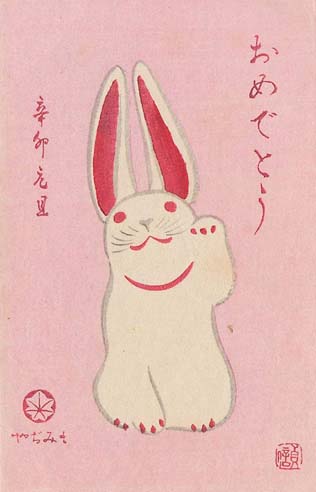
What a pity that three months ago, when writing on the New Year’s Eve dinner of the Year of the Rabbit we did not yet know the Japanese New Year’s postcards of the Boston Fine Arts Museum. Nevertheless, we publish them at least now, with the advent of the summer in the Chinese calendar.
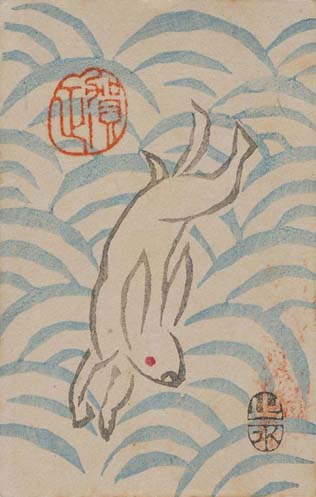
In Japan it is an old custom to send New Year’s greeting cards – 年賀状 nengajō – to friends and relatives with the picture of the animal of the actual year. The animals of the Chinese/Asian zodiac return every twelve years, so in the first half of the twentieth century the Years of the Rabbit fell on 1903, 1915, 1927, 1939 and 1951. The following cards date from these years.
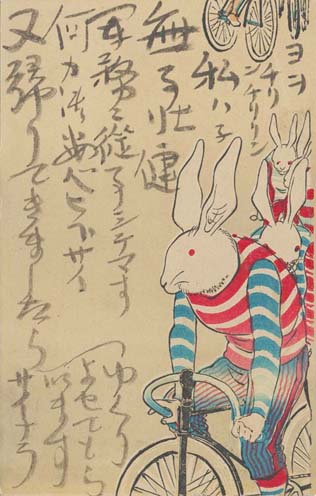 After the cycling bears, some cycling rabbits (1903)
After the cycling bears, some cycling rabbits (1903)The peoples in the Far East see a rabbit in the moon’s spots, which for thousands of years has been grinding in a gigantic mortar the herbs of immortality for the gods: 白兔捣药成 bódù dăo yào chèng, “the moon-rabbit is grinding the herbs”, says in his poem “Old Dust” the great Tang-era poet Li Bai. And thirteen centuries later the contemporary poet Kayoko Hashimoto brings the rabbit even to Europe in her haiku composed both in Japanese and English, which can be also regarded as a most beautiful patriotic poem:
Even to Rome I bring along the rabbit in the moon |
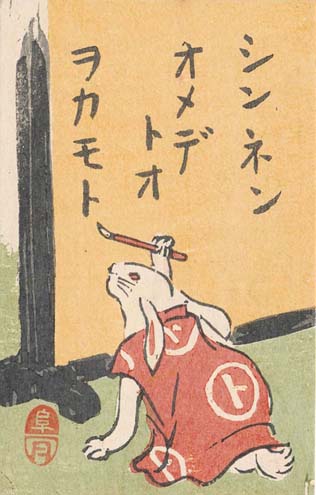
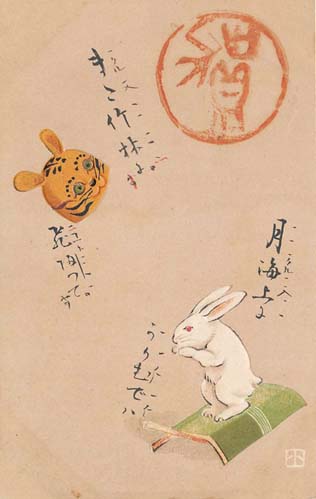
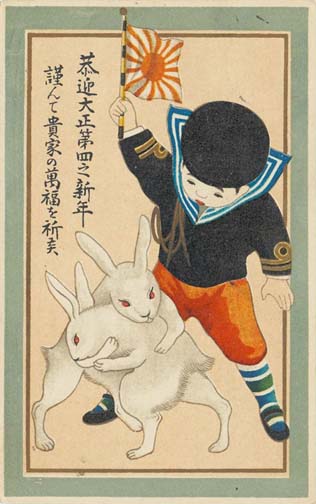
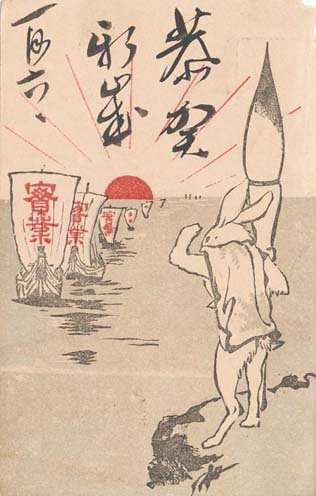
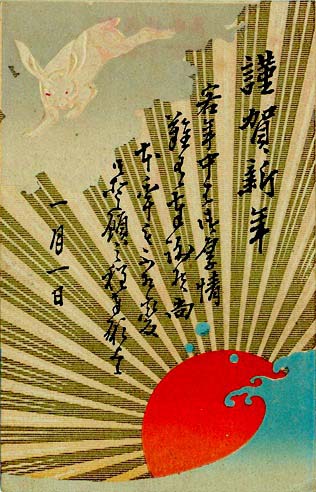
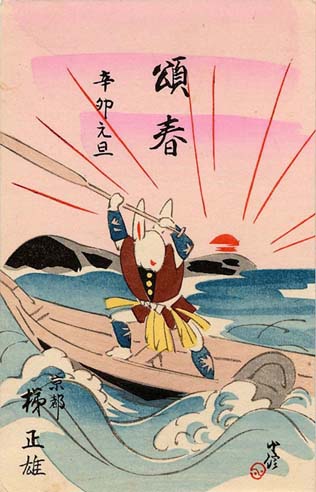
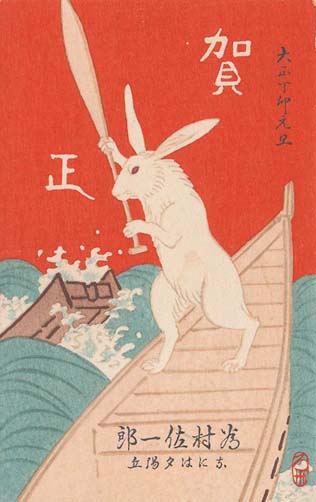
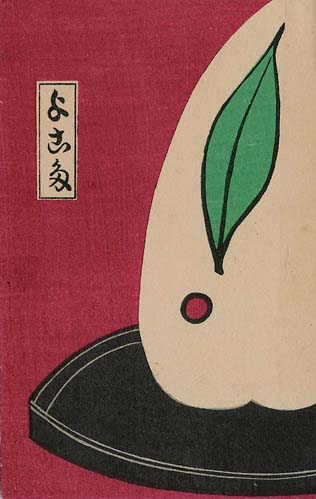
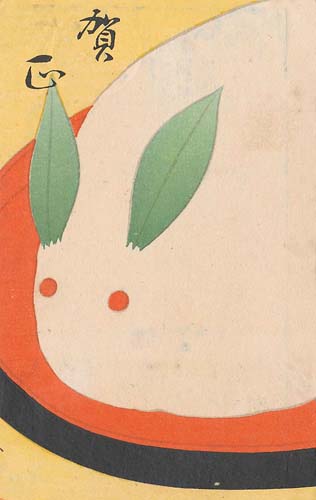
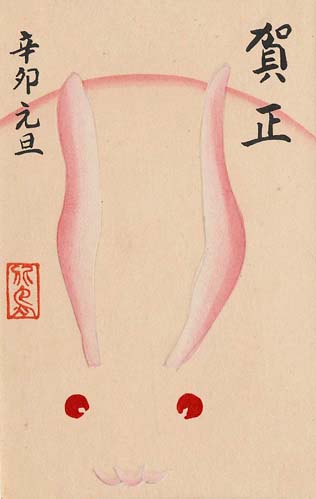
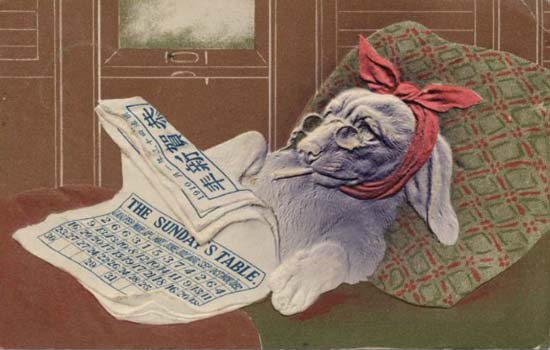
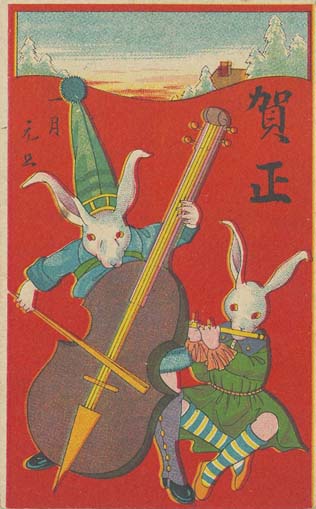
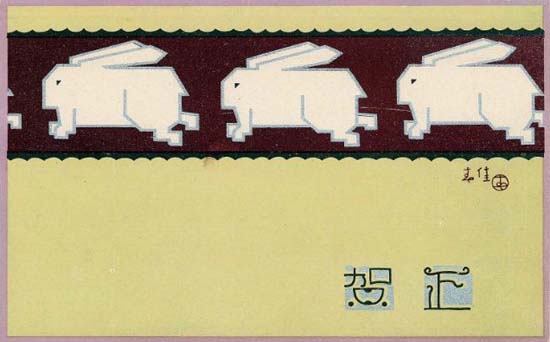
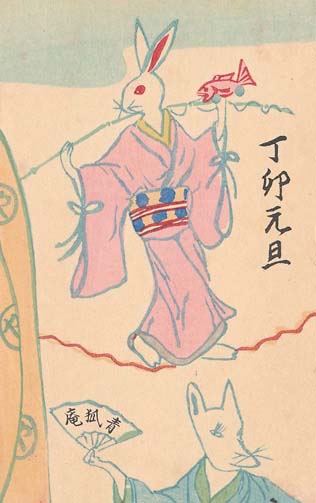
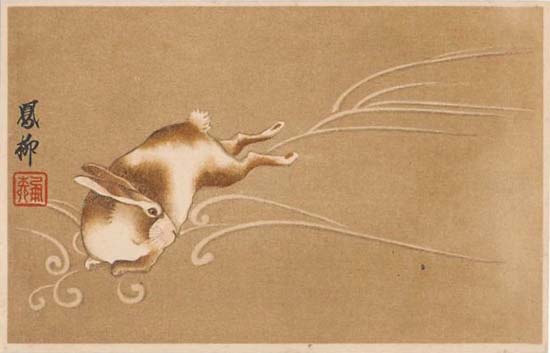
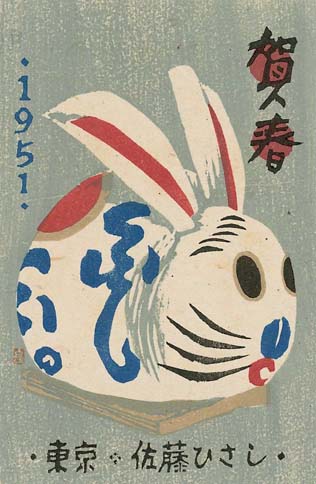
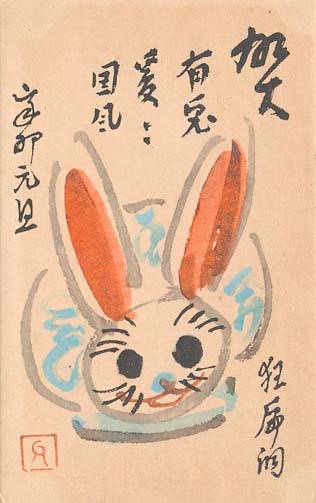
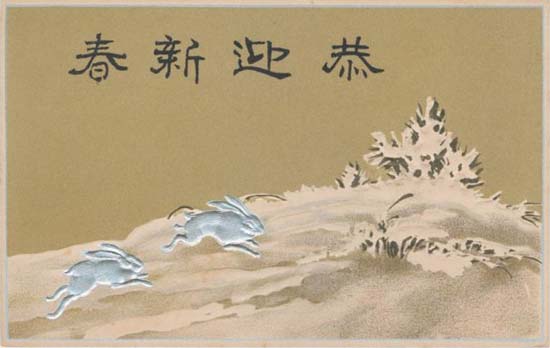
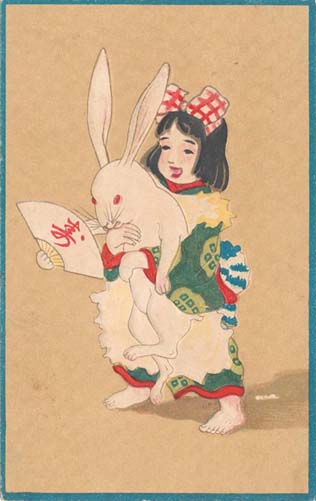
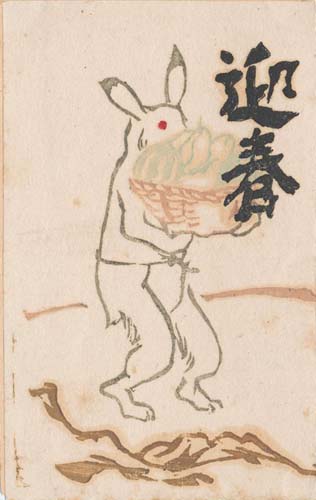
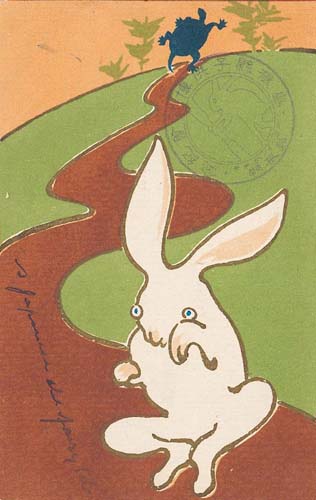
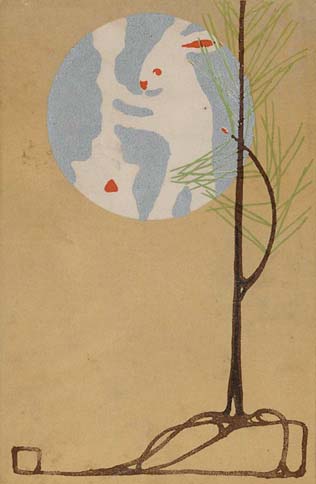


























































No hay comentarios:
Publicar un comentario